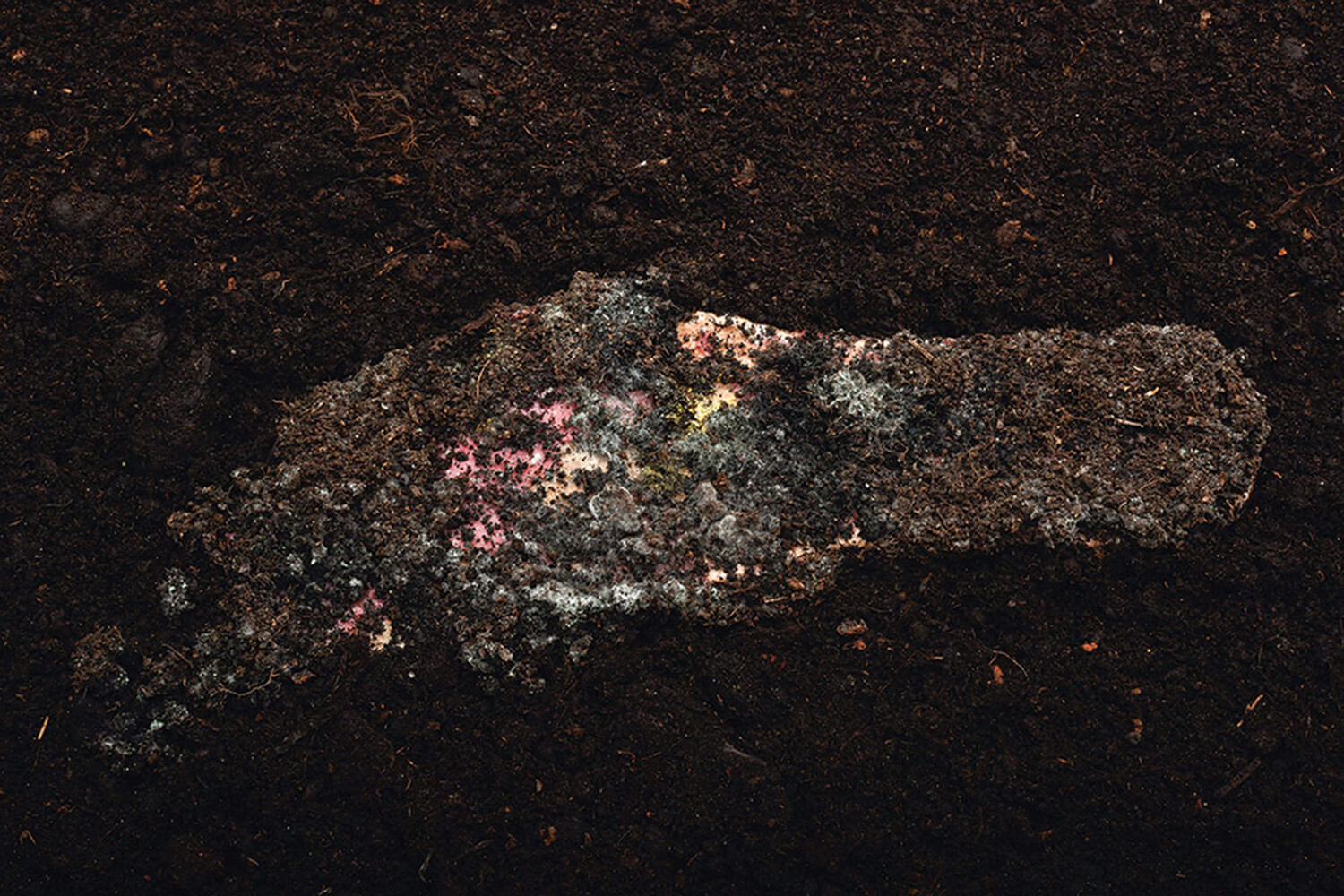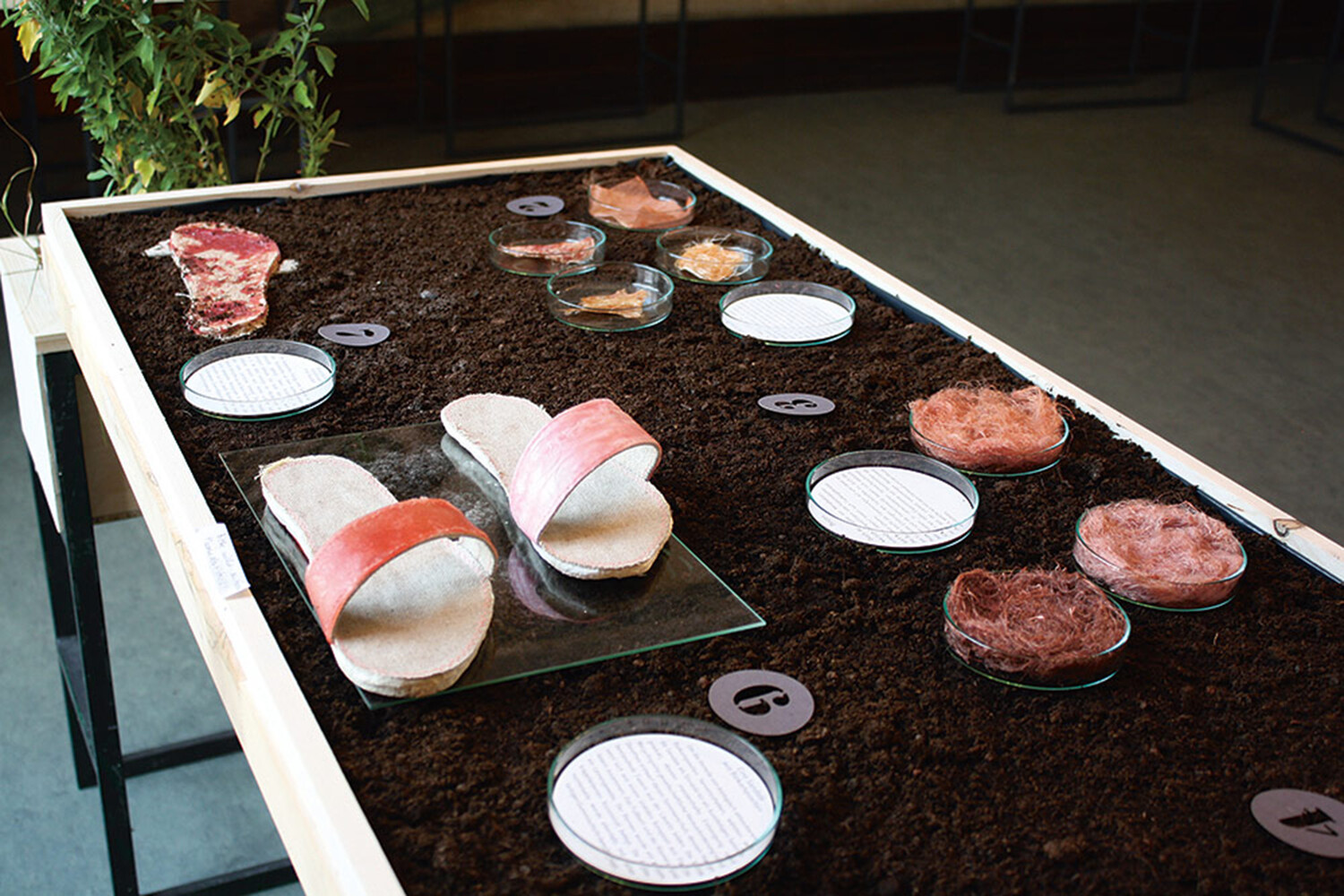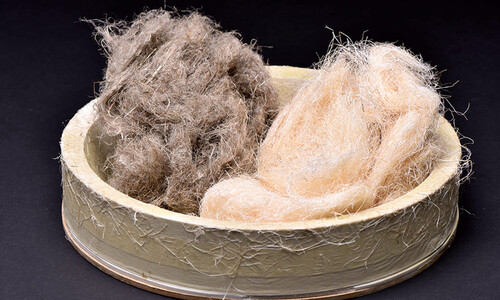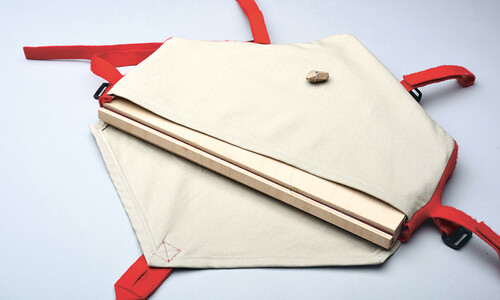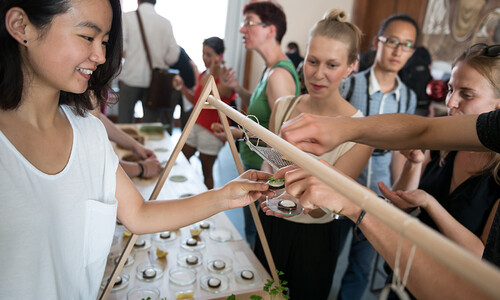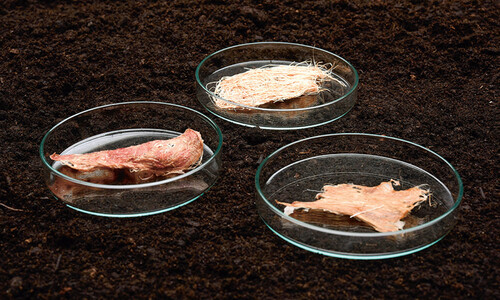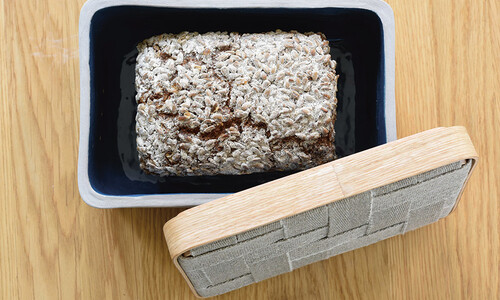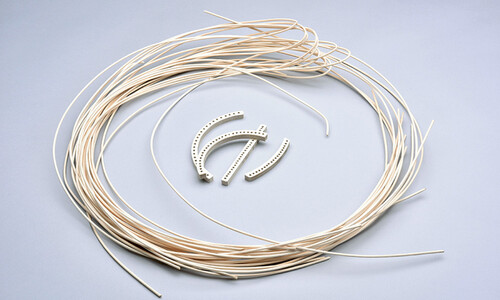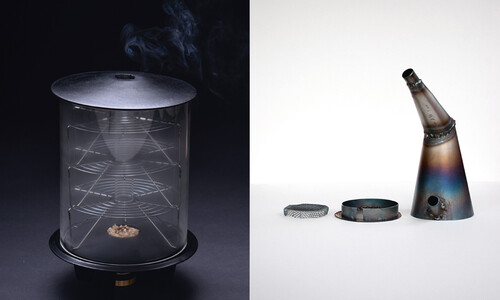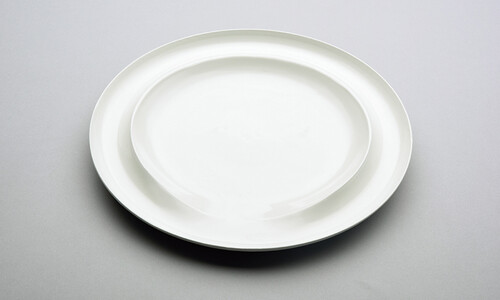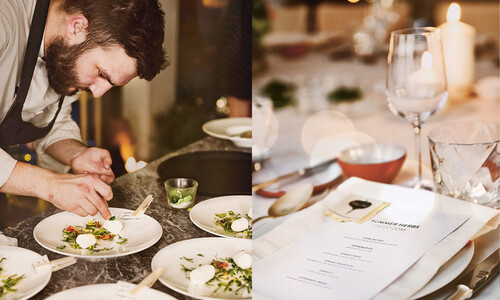In our material excursion, we focused on the production of a compostable biocomposite made from materials typical of Lusatia and dyed with the madder plant. Using simple means, we wanted to demonstrate an alternative to conventional production methods, in which bioplastics continue to be combined with petrochemically produced color granules.
To make our research process tangible for the viewer, we transferred it into an installation that recreates a laboratory situation. It shows the cyclical life cycle of a product that, in line with the cycle of the biosphere, ultimately decomposes back into its raw materials.
It starts with the plant, in our case the dye plant madder, as well as various other plants that serve as the basis for bioplastics and composites. Plants use photosynthesis to produce biomass from water and atmospheric carbon dioxide, from which fibers, vegetable oils, starch, and dyes can be extracted. Processing these yields the primary materials for composite production.
Madder is a special dye plant in that it allows for a wide range of colors, from every conceivable shade of red to orange, pink, purple, brown, and even a short-lived green hue that oxidizes on contact with air. Influencing factors include the use of different metal salts or the acid or starch content of a bioplastic. The age and origin of the plant also play a role – one could almost think of “vintages.” Thus, the individual coloration becomes a special quality, in contrast to standardized, industrial production methods.
The tangible result of the project is a sandal that represents a short-lived product and its life cycle. After use, it should be able to be composted without hesitation, where, after decomposition, it becomes the basis for new raw materials.
The sandal can be associated with the ecological footprint, but it also refers specifically to the potential of Lusatia and the opportunities for linking regional resources. Not only are traditional crops grown here, but the Fraunhofer Institute for Applied Polymer Research in Schwarzheide is also focusing on the relevant areas of bio-based and fiber-reinforced plastics. In view of global problems, a shift to products made from renewable raw materials and biodegradable materials is inevitable. Our vision is that modern technologies and traditional material knowledge will combine to form a forward-looking field of research.

